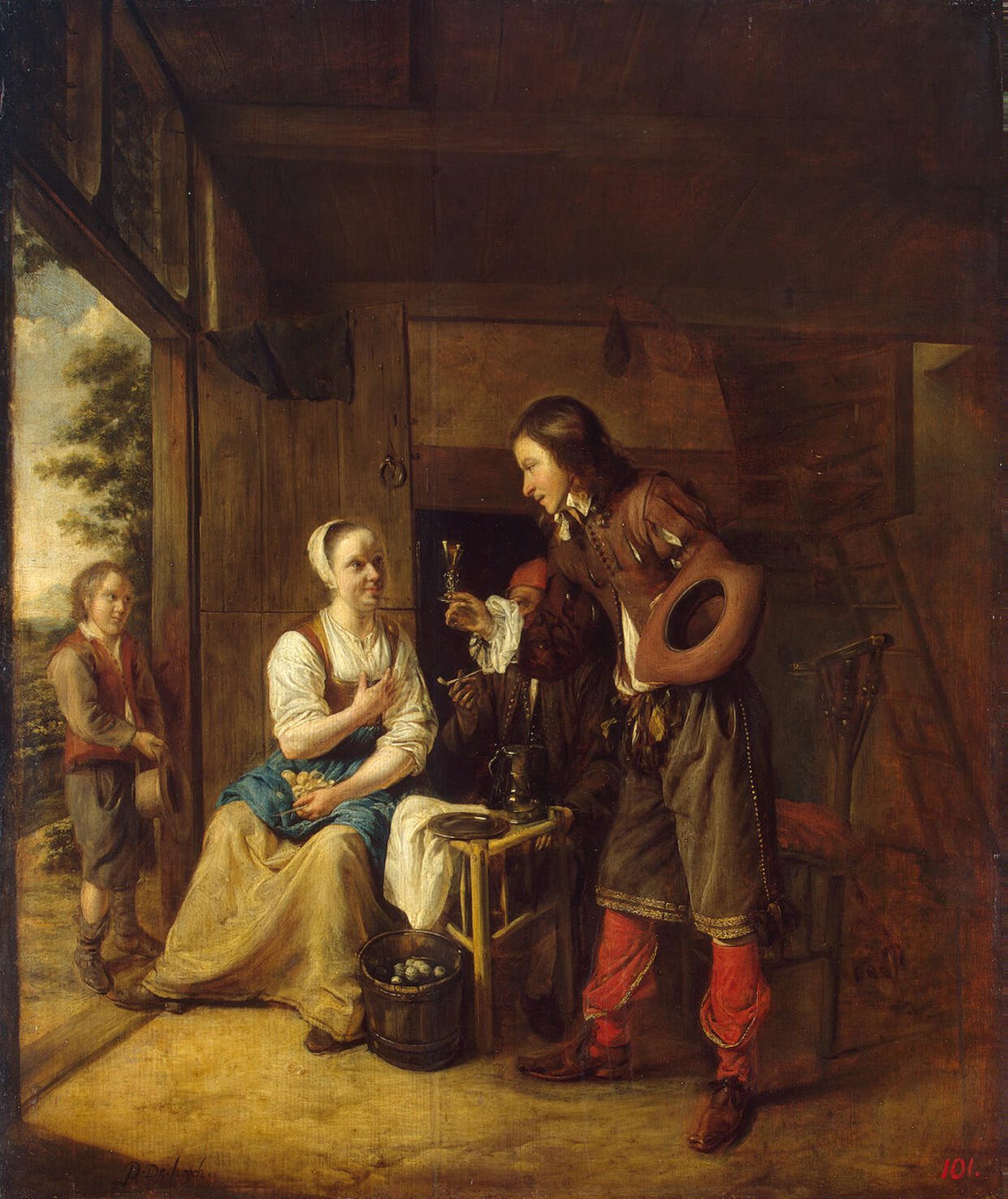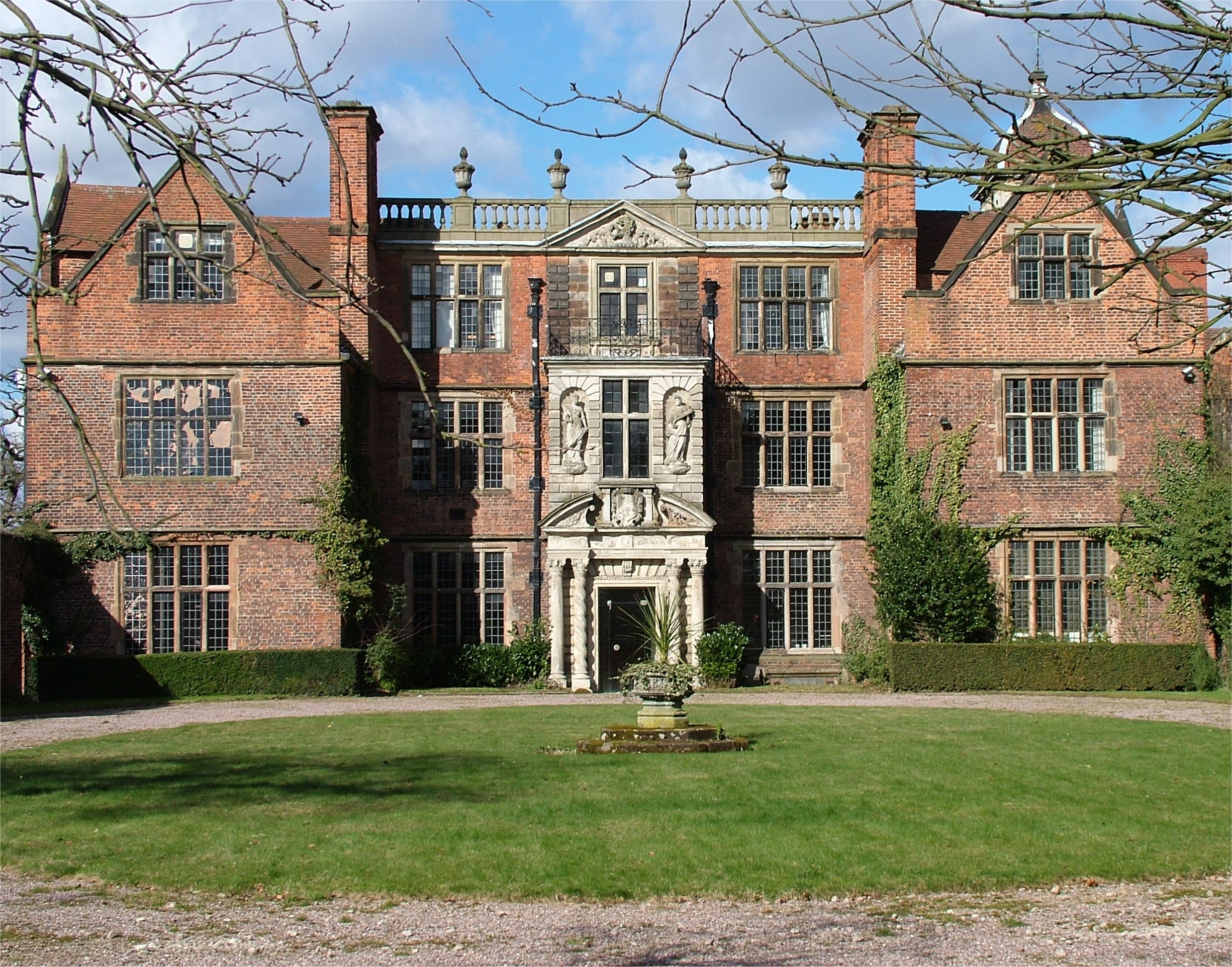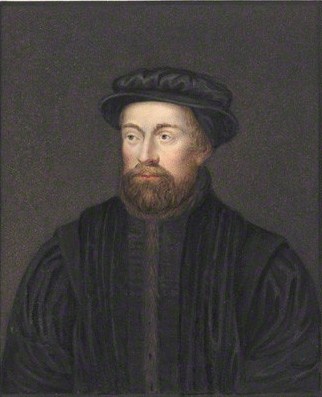|
John Calcott Horsley
John Callcott Horsley (29 January 1817 – 18 October 1903) was a British academic painter of genre and historical scenes, illustrator, and designer of the first Christmas card. He was a member of the artist's colony in Cranbrook. Childhood and education Horsley was born in London, the son of William Horsley, the musician, and grand-nephew of Sir Augustus Callcott. His sister Mary Elizabeth Horsley wed the famous British engineer Isambard Kingdom Brunel in 1836. Horsley was mentored by William Mulready and Augustus Wall Callcot who sent him at age thirteen to study at Dr Henry Sass's academy where he met D.G Rossetti, J. Millais and W.P. Frith; in his biography Horsley recalls Dr Sass as being vain and untalented.The Cranbrook Colony: Fresh Perspectives, Wolverhampton Art Gallery, 2010 Following preparatory school Horsley studied painting at the Royal Academy schools where he met Thomas Webster. In 1836 he exhibited ''The Pride of the Village'' (Vernon Gallery) at the Ro ... [...More Info...] [...Related Items...] OR: [Wikipedia] [Google] [Baidu] |
John Callcott Horsley - St
John is a common English name and surname: * John (given name) * John (surname) John may also refer to: New Testament Works * Gospel of John, a title often shortened to John * First Epistle of John, often shortened to 1 John * Second Epistle of John, often shortened to 2 John * Third Epistle of John, often shortened to 3 John People * John the Baptist (died ), regarded as a prophet and the forerunner of Jesus Christ * John the Apostle (died ), one of the twelve apostles of Jesus Christ * John the Evangelist, assigned author of the Fourth Gospel, once identified with the Apostle * John of Patmos, also known as John the Divine or John the Revelator, the author of the Book of Revelation, once identified with the Apostle * John the Presbyter, a figure either identified with or distinguished from the Apostle, the Evangelist and John of Patmos Other people with the given name Religious figures * John, father of Andrew the Apostle and Saint Peter * Pope John (disambigu ... [...More Info...] [...Related Items...] OR: [Wikipedia] [Google] [Baidu] |
Victoria And Albert Museum
The Victoria and Albert Museum (abbreviated V&A) in London is the world's largest museum of applied arts, decorative arts and design, housing a permanent collection of over 2.8 million objects. It was founded in 1852 and named after Queen Victoria and Albert, Prince Consort, Prince Albert. The V&A is in the Royal Borough of Kensington and Chelsea, in an area known as "Albertopolis" because of its association with Prince Albert, the Albert Memorial, and the major cultural institutions with which he was associated. These include the Natural History Museum, London, Natural History Museum, the Science Museum (London), Science Museum, the Royal Albert Hall and Imperial College London. The museum is a non-departmental public body sponsored by the Department for Digital, Culture, Media and Sport. As with other national British museums, entrance is free. The V&A covers and 145 galleries. Its collection spans 5,000 years of art, from ancient history to the present day, from the c ... [...More Info...] [...Related Items...] OR: [Wikipedia] [Google] [Baidu] |
John Sheepshanks (art Collector)
John Sheepshanks (1787–1863), British manufacturer and art collector, was born in Leeds, and became a partner in his father's business as a cloth manufacturer. Sheepshanks collected pictures, mainly by British artists, and in 1857 presented his notable collection to the nation. These are at the Victoria & Albert Museum, London, which no longer observes all the conditions which he attached to the gift. He retired from business in 1833 and died a bachelor in 1863. His sister and brother were Anne Sheepshanks and Richard Sheepshanks Richard Sheepshanks (30 July 1794 – 4 August 1855) was a British astronomer. Personal life Sheepshanks was born on 30 July 1794, in Leeds, the son of Joseph Sheepshanks, a Leeds textile manufacturer of the well-to-do Sheepshank family of Bilto ....A. M. Clerke, ‘Sheepshanks, Richard (1794–1855)’, rev. Michael Hoskin, Oxford Dictionary of National Biography, Oxford University Press, 2004; online edn, May 201accessed 16 March 2017/ref> R ... [...More Info...] [...Related Items...] OR: [Wikipedia] [Google] [Baidu] |
Albert, Prince Consort
Prince Albert of Saxe-Coburg and Gotha (Franz August Karl Albert Emanuel; 26 August 1819 – 14 December 1861) was the husband of Queen Victoria. As such, he was consort of the British monarch from their marriage on 10 February 1840 until his death in 1861. Victoria granted him the title Prince Consort in 1857. Albert was born in the Saxon duchy of Saxe-Coburg-Saalfeld to a family connected to many of Europe's ruling monarchs. At the age of 20, he married Victoria, his first cousin, with whom he had nine children. Initially, he felt constrained by his role as consort, which did not afford him power or responsibilities. He gradually developed a reputation for supporting public causes, such as educational reform and the abolition of slavery worldwide, and he was entrusted with running the Queen's household, office and estates. He was heavily involved with the organisation of the Great Exhibition of 1851, which was a resounding success. Victoria came to depend more and mor ... [...More Info...] [...Related Items...] OR: [Wikipedia] [Google] [Baidu] |
Johannes Vermeer
Johannes Vermeer ( , ; see below; also known as Jan Vermeer; October 1632 – 15 December 1675) was a Dutch painter who specialized in domestic interior scenes of middle-class life. He is considered one of the greatest painters of the Dutch Golden Age. During his lifetime, he was a moderately successful provincial genre painter, recognized in Delft and The Hague. He produced relatively few paintings, primarily earning his living as an art dealer. He was not wealthy; at his death, his wife was left in debt. Vermeer worked slowly and with great care, and frequently used very expensive pigments. He is particularly renowned for making masterful use of light in his work. "Almost all his paintings", Hans Koningsberger wrote, "are apparently set in two smallish rooms in his house in Delft; they show the same furniture and decorations in various arrangements and they often portray the same people, mostly women." The modest celebrity he enjoyed during his life gave way to obscurity ... [...More Info...] [...Related Items...] OR: [Wikipedia] [Google] [Baidu] |
Pieter De Hooch
Pieter Hendricksz. de Hooch (; also spelled ''Hoogh'' or ''Hooghe''; 20 December 1629 – after 1683), was a Dutch Golden Age painter famous for his genre works of quiet domestic scenes with an open doorway. He was a contemporary, in the Delft Guild of St. Luke, of Jan Vermeer with whom his work shares themes and style. De Hooch was first recorded in Delft on 5 August 1652, when he and another painter, Hendrick van der Burgh witnessed the signing of a will. He was active in 1683, but his date of death is unknown (his son Pieter died in 1684, a date often wrongly given for the father). Biography De Hooch was born in Rotterdam to Hendrick Hendricksz de Hooch, a bricklayer, and Annetge Pieters, a midwife, baptised at the Reformed Church in Rotterdam in 1629. He was the eldest of five children and outlived all of his siblings, evidently raised in a working class home. Though, his father was described as a "master bricklayer", hence a skilled artisan required to be a member ... [...More Info...] [...Related Items...] OR: [Wikipedia] [Google] [Baidu] |
Dutch Golden Age Painting
Dutch Golden Age painting is the painting of the Dutch Golden Age, a period in Dutch history roughly spanning the 17th century, during and after the later part of the Eighty Years' War (1568–1648) for Dutch independence. The new Dutch Republic was the most prosperous nation in Europe and led European trade, science, and art. The northern Terminology of the Low Countries, Netherlandish provinces that made up the new state had traditionally been less important artistic centres than cities in Flanders in the south. The upheavals and large-scale transfers of population of the war, and the sharp break with the old monarchist and Catholic cultural traditions, meant that Dutch art had to reinvent itself almost entirely, a task in which it was very largely successful. The painting of religious subjects declined very sharply, but a large new market for all kinds of secular subjects grew up. Although Dutch painting of the Golden Age is included in the general European period of Baroque ... [...More Info...] [...Related Items...] OR: [Wikipedia] [Google] [Baidu] |
Jacobean Architecture
The Jacobean style is the second phase of Renaissance architecture in England, following the Elizabethan style. It is named after King James VI and I, with whose reign (1603–1625 in England) it is associated. At the start of James's reign, there was little stylistic break in architecture, as Elizabethan trends continued their development. However, his death in 1625 came as a decisive change towards more classical architecture, with Italian influence, was in progress, led by Inigo Jones. The style this began is sometimes called Stuart architecture, or English Baroque (though the latter term may be regarded as starting later). Courtiers continued to build large prodigy houses, even though James spent less time on summer progresses around his realm than Elizabeth had. The influence of Flemish and German Northern Mannerism increased, now often executed by recruited craftsmen and artists, rather than obtained from books as in the previous reign. There continued to be very little b ... [...More Info...] [...Related Items...] OR: [Wikipedia] [Google] [Baidu] |
Cranbrook, Kent
Cranbrook is a town in the civil parish of Cranbrook and Sissinghurst, in the Weald of Kent in South East England. It lies roughly half-way between Maidstone and Hastings, about southeast of central London. The smaller settlements of Sissinghurst, Swattenden, Colliers Green and Hartley, Cranbrook, Hartley lie within the civil parish. The population of the parish was 6,717 in 2011. History The place name Cranbrook derives from Old English ''cran bric'', meaning Crane (bird), Crane Marsh, marshy ground frequented by cranes (although more probably herons). Spelling of the place name has evolved over the centuries from ''Cranebroca'' (c. 1100); by 1226 it was recorded as ''Cranebroc'', then Cranebrok. By 1610 the name had become Cranbrooke, which evolved into the current spelling. There is evidence of early activity here in the Roman period at the former Little Farningham Farm where a substantial iron working site was investigated in the 1950s. In 2000 the site was the subj ... [...More Info...] [...Related Items...] OR: [Wikipedia] [Google] [Baidu] |
Victor Horsley
Sir Victor Alexander Haden Horsley (14 April 1857 – 16 July 1916) was a British scientist and professor. He was born in Kensington, London. Educated at Cranbrook School, Kent, he studied medicine at University College London and in Berlin, Germany (1881) and, in the same year, started his career as a house surgeon and registrar at the University College Hospital. From 1884 to 1890, Horsley was Professor-Superintendent of the Brown Institute. In 1886, he was appointed as Assistant Professor of Surgery at the National Hospital for Paralysis and Epilepsy, and as a Professor of Pathology (1887–1896) and Professor of Clinical Surgery (1899–1902) at University College London. He was a supporter of women's suffrage and was an opponent of tobacco and alcohol. Personal life Victor Alexander Haden Horsley was born in Kensington, London, the son of Rosamund (Haden) and John Callcott Horsley, Royal Academy of Arts, R.A. and the brother of Rosamund Brunel Gotch, Rosamund Brunel Hor ... [...More Info...] [...Related Items...] OR: [Wikipedia] [Google] [Baidu] |
Royal Academy Of Arts
The Royal Academy of Arts (RA) is an art institution based in Burlington House in Piccadilly London, England. Founded in 1768, it has a unique position as an independent, privately funded institution led by eminent artists and architects. Its purpose is to promote the creation, enjoyment and appreciation of the fine arts through exhibitions, education and debate. History The origin of the Royal Academy of Arts lies in an attempt in 1755 by members of the Society for the Encouragement of Arts, Manufactures and Commerce, principally the sculptor Henry Cheere, to found an autonomous academy of arts. Before this, several artists were members of the Society for the Encouragement of Arts, Manufactures and Commerce, including Cheere and William Hogarth, or were involved in small-scale private art academies, such as the St Martin's Lane Academy. Although Cheere's attempt failed, the eventual charter, called an 'Instrument', used to establish the Royal Academy of Arts over a decade ... [...More Info...] [...Related Items...] OR: [Wikipedia] [Google] [Baidu] |









